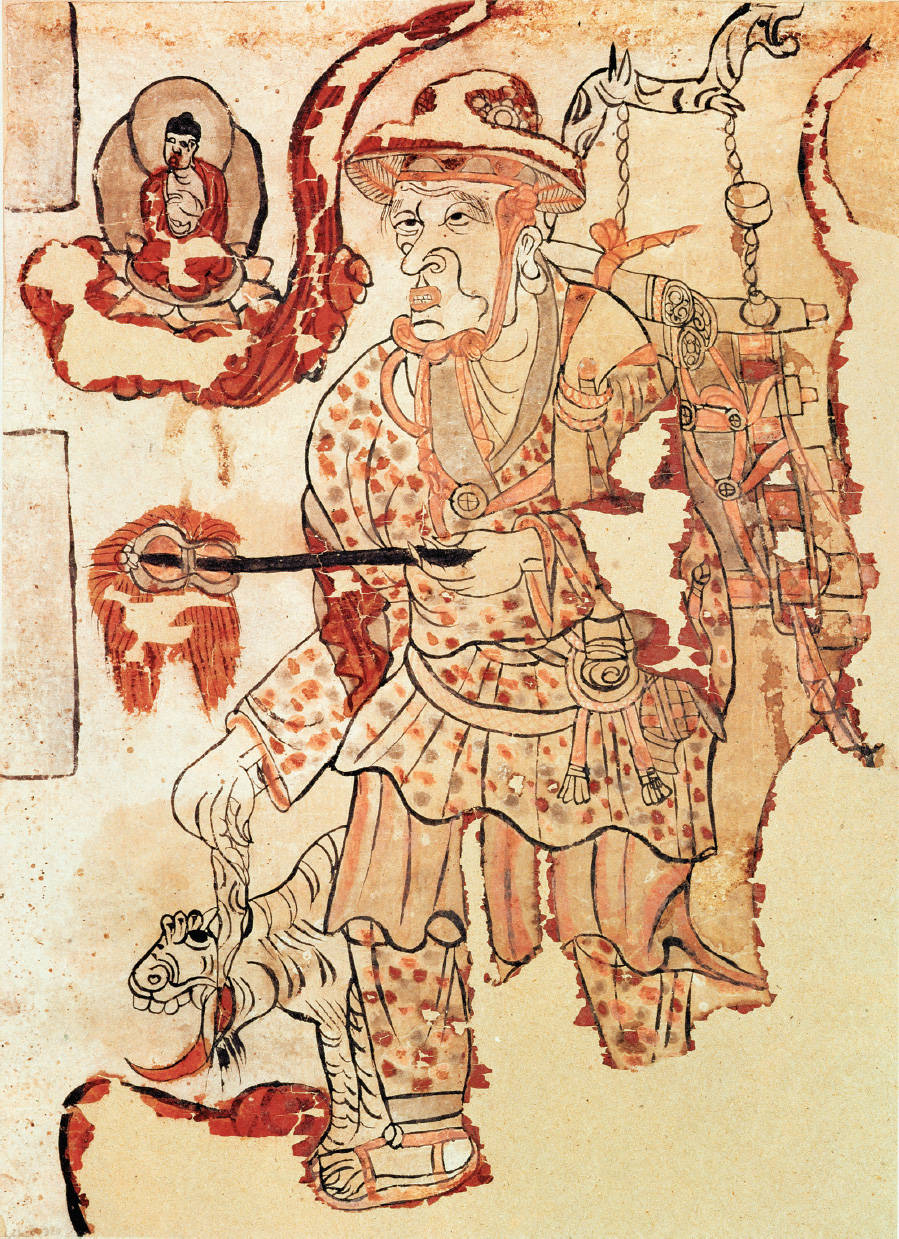Visual Source 7.3
A Buddhist Monk on the Silk Road
In addition to merchants, the Silk Roads also hosted numerous Buddhist monks, some of them headed for India in search of holy texts and sacred relics. Others traveled from town to town teaching the message of the Buddha. Thus, at least until the rise of Islam, Buddhism was a common feature in the experience of many participants in the Silk Roads network and a point of contact between Central Asian peoples and the civilizations of India and China. Visual Source 7.3, a tenth-century Chinese painting also from the Magao Caves, shows a traveling monk on the Silk Road. Notice that the monk is leading a tiger, long a symbol of protection and courage and a messenger between heaven and the human world (see the photo of Dunhuang). It also recalls a much-told story of the Buddha, in an earlier life, compassionately offering his blood and body to feed some starving tiger cubs and their mother.

Question
What function does the small Buddha sitting on a cloud at the upper left play in this painting?
Question
On his back the monk is carrying a heavy load of Buddhist texts, or sutras. Why do you think Buddhist monks were so eager to acquire and to disseminate such texts? (See also Document 7.1.)
Question
At the end of the monk’s staff hangs what is probably a container for relics, perhaps a bone or a tuft of hair from the Buddha himself. Why might such relics have had such an appeal for the faithful? Can you identify a similar veneration of relics in other religious traditions?